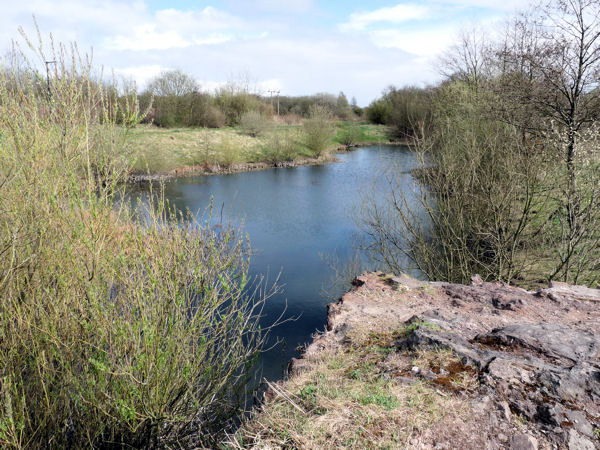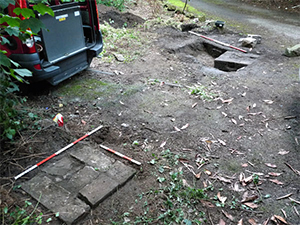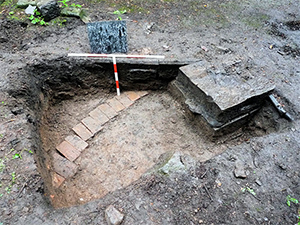
Last week our field team met with Mark Champion from the Wild Life Trust. The purpose was to discuss the possibilities of further work following on from the survey we carried out in April this year (Newsletter 163). We had transferred the results onto old maps of the area enabling us to pinpoint fairly accurately where the Steel Works had once been.
Liz Smith from the Trust had also suggested that maybe we could carry out 'mini' excavations to expose any features lying just under the surface. As we walked over the site last week, Mark was keen to point out some of the unique features in the landscape which had developed due to its past industrial activity. Slag from the blast furnaces has produced an alkaline-rich soil. This, together with the slightly saline coal waste, has resulted in a habitat that is reminiscent of remote areas of the south coast of Britain. Grasses normally found on seaside dunes, water plants not native to these parts and rare flowers, all make this quite a remarkable landscape.
However Mark was not averse to us carrying out some excavation. He highlighted a number of areas where he thought digging would do little or no damage to the ecology. In fact Mark was quite keen in trying to understand the site himself e.g. how it had developed into its present state. Some areas didn't seem to make sense; i.e. some of the water features were located just where the factory had been. Why would they dig out theses features? Where was the original ground level? These are questions we can help to solve - firstly by doing a reverse survey to locate potential areas and then from this, develop a project plan to present to the council (the present land owner). Mark thinks that with his approval, getting permission should not be a problem. It would be quite something for us to uncover structures from a site with such a significant industrial heritage.
Rectory Latest
Reporting last time on the Rectory, we had expectations of discovering the moat associated with the Medieval manor house. However our latest excavations proved this not to be the case. The ditch feature we had come across turned out to be quite small (no more than 0.5m wide) and therefore probably nothing more than drainage ditch. Interesting in itself, as it predates to the overlying 17th century cobbled surface, it was still a bit of a disappointment.
However, whilst packing up, we noticed stonework protruding through the undergrowth near to the original entrance in front of the hall. On clearing the vegetation we managed to reveal the remains of the original gateposts associated with the 17th century hall. This is a great find (strange we hadn't noticed before).
The posts consist of dressed stone blocks and survive to a depth of at least 3 courses. There was also curbing radiating from them which must date from the 19th century, proving that the posts where still visible at that time. Other moated sites, such as Low Hall or Arley Hall, have the gatepost located just where the bridge across the moat. With this in mind we opened up a trench behind the right hand post. So far we've only come across a brick culvert which skirts around it. The culvert runs under the curbing suggesting it dates from around the mid 19th century. We still have hopes for this area as we have room to expand. If you want to get involved with our work there please contact me at the meeting.
 
Next Meeting
Wednesday 2nd October - in the Standish Suite at the Brocket Arms (7.30pm as usual). This month we have Paul Kenyon from the Latham Park Trust who will be giving us a talk which is entitled 'A Potted History of Latham (from Pre-Historic times to Present)'. This will include recent finds from the Bronze-age site at Duttons Farm and the Latham House site where the famous siege took place in the Civil War. Hope to see you there, BA.
|



